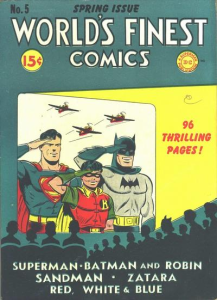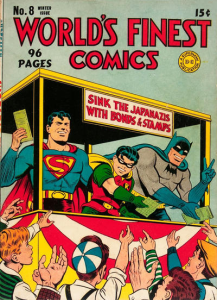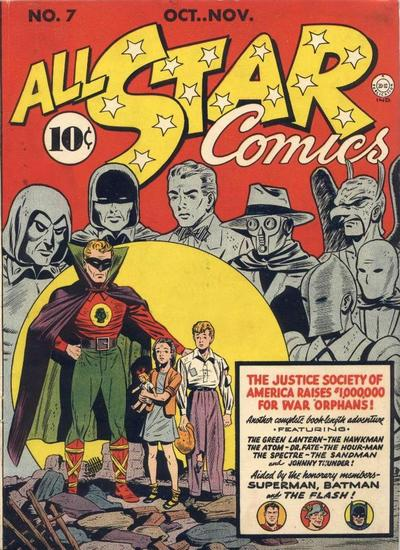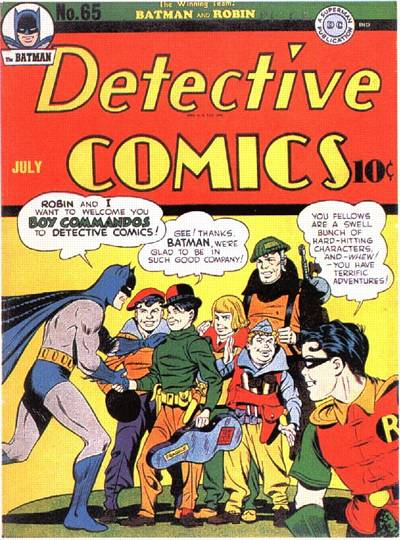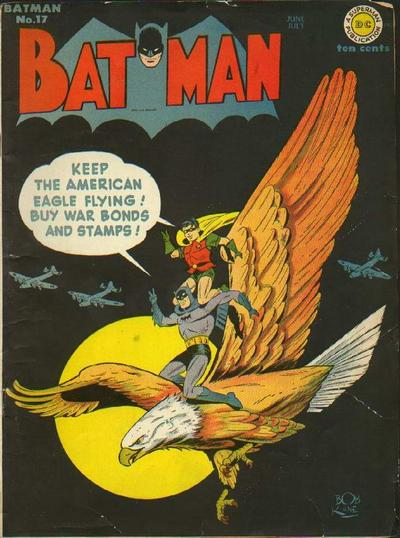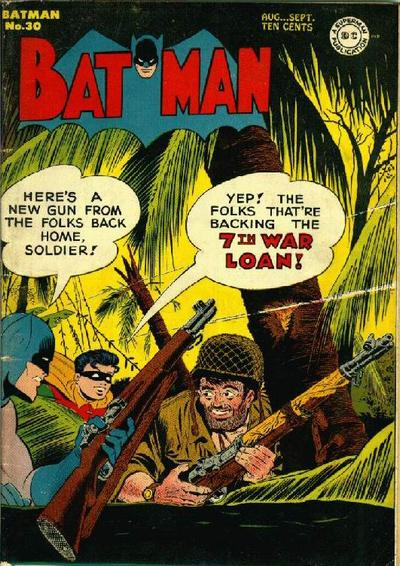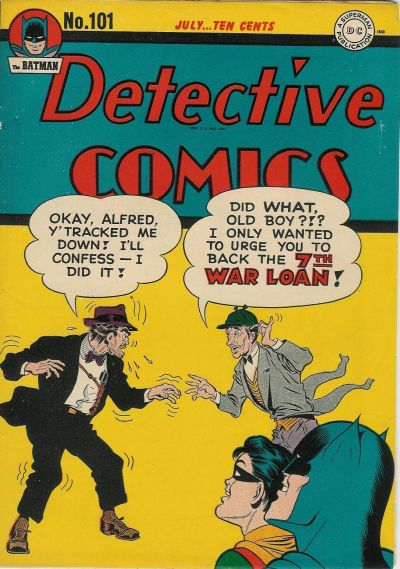Although nowadays movies set in World War II have become mostly synonymous with tearjerker melodramas or grim military epics, this wasn’t always the case. The gravitas of that conflict and the overwhelming consensus about who the heroes and villains were helped raise the stakes in a myriad of enjoyable films over the last seven decades, from the vicious thrills of Billy Wilder’s Stalag 17 and John Frankenheimer’s The Train to the twist-filled shenanigans of John Sturges’ The Eagle Has Landed and George Seaton’s 36 Hours. Steven Spielberg himself approached the Nazi era with quite a zany exuberance in Raiders of the Lost Ark and Indiana Jones and the Last Crusade, not to mention 1941, before going on to direct the self-important Schindler’s List and Saving Private Ryan.
I’m certainly not saying the Second World War doesn’t deserve to be taken seriously. However, I do take issue with the notion some critics have that to treat WWII in any way other than Band of Brothers shows a lack of respect for the Greatest Generation. If you actually watch the movies that generation was cranking out back when fascism was a real threat, back when soldiers and civilians were actually getting killed on a massive scale in Europe and Asia, back when the outcome of the war was not at all certain, hell, even before the American participation was taken for granted… those movies include hilarious comedies making fun of the Nazis, like Ernst Lubitsch’s To Be Or Not To Be and Charlie Chaplin’s The Great Dictator (plus a bunch of sharp home front satires, such as Hail the Conquering Hero, The Miracle of Morgan’s Creek, The More the Merrier, and The Major and the Minor). Even political dramas like Michael Curtiz’ Casablanca and Fritz Lang’s Hangmen Also Die! didn’t forget to be highly entertaining.
As for the Batman comics which came out at the time, those were kind of a mixed bag…
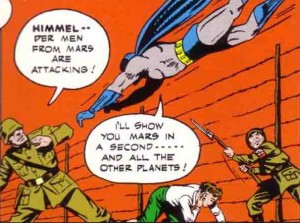 Batman #15
Batman #15
The Caped Crusader could hardly disregard what was going on in the world. For one thing, he was an honorary member of the Justice Society of America, which means he was asked to chip in $100,000 in 1941, when the JSA decided to raise a million dollars for the relief of refugee children in war-torn democracies:
Moreover, starting in June 1942, Batman shared Detective Comics with the Boy Commandos, a special unit of the Allies that was basically an international gang of cocky teenage street kids (a goofy concept, for sure, but not even one of Jack Kirby’s craziest creations).
A lot of it was predictably crude (even if not as disturbing as the Batman serial released at the time). Bill Finger’s and Jack Burnley’s ‘The Two Futures’ (Batman #15) is basically a 13-page long ad to support the war effort, thinly disguised as a Batman story. The Dynamic Duo goes to Gotham University and asks the ‘world’s greatest historian’ to predict the aftermath of the war. They are told two possible versions, one version involving the Nazis and the Japanese taking over America and turning it into a fascist dystopia (with Batman and Robin ultimately executed by a firing squad), the other version involving the defeat of the Axis powers and the emergence of a better world. That’s it. The tale doesn’t have much of a plot and, even as a piece of propaganda aimed at kids, doesn’t seem very creative – until you recall that the cover is dated February-March 1943, a time when merely picturing the end of the war required a fair share of imagination.
Still, all these years later, Don Cameron’s lighthearted approach to WWII is way more enjoyable to read, not least because it is seriously bonkers! I know I’ve already discussed the comic he wrote in which the Dynamic Duo literaly crushes a ring of Nazi spies with a swastika-shaped lamp, but even that pales in comparison to ‘Atlantis Goes to War!’
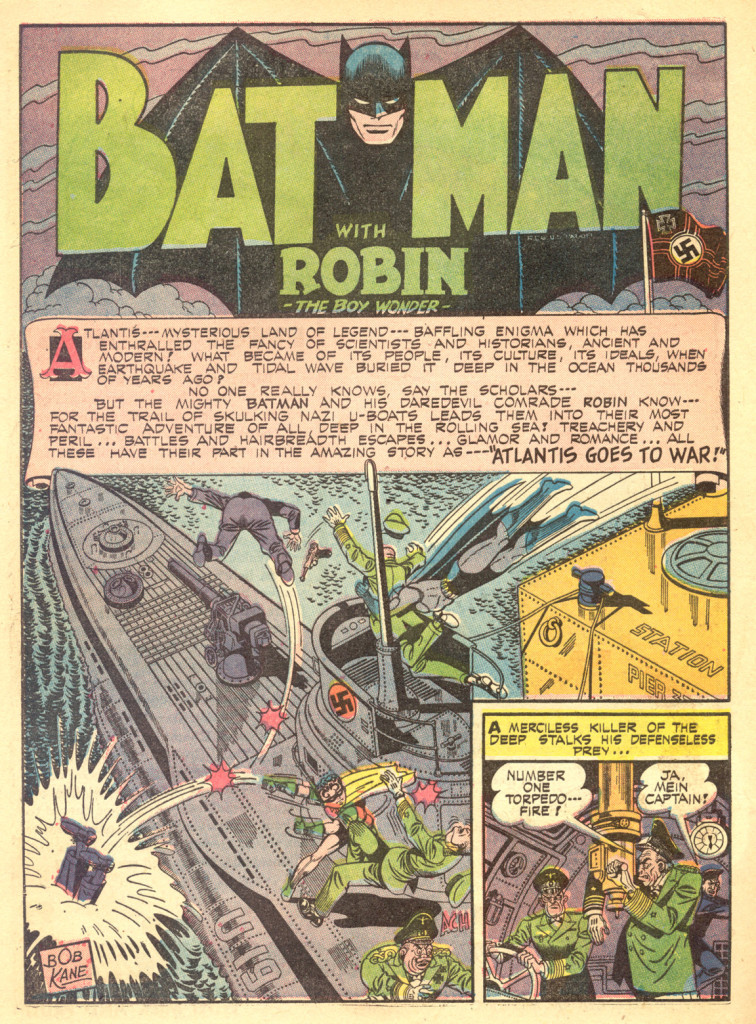 Batman #19
Batman #19
Written by Don Cameron and illustrated by Dick Sprang (ghosting for Bob Kane), with the cover date October-November 1943, ‘Atlantis Goes to War!’ is wall-to-wall adventure.
Robin convinces the Dark Knight to use the Batplane to search the Caribbean for a secret German submarine base. And damn it if they don’t fall into a whirlpool that leads them to the lost, underwater Kingdom of Atlantis:
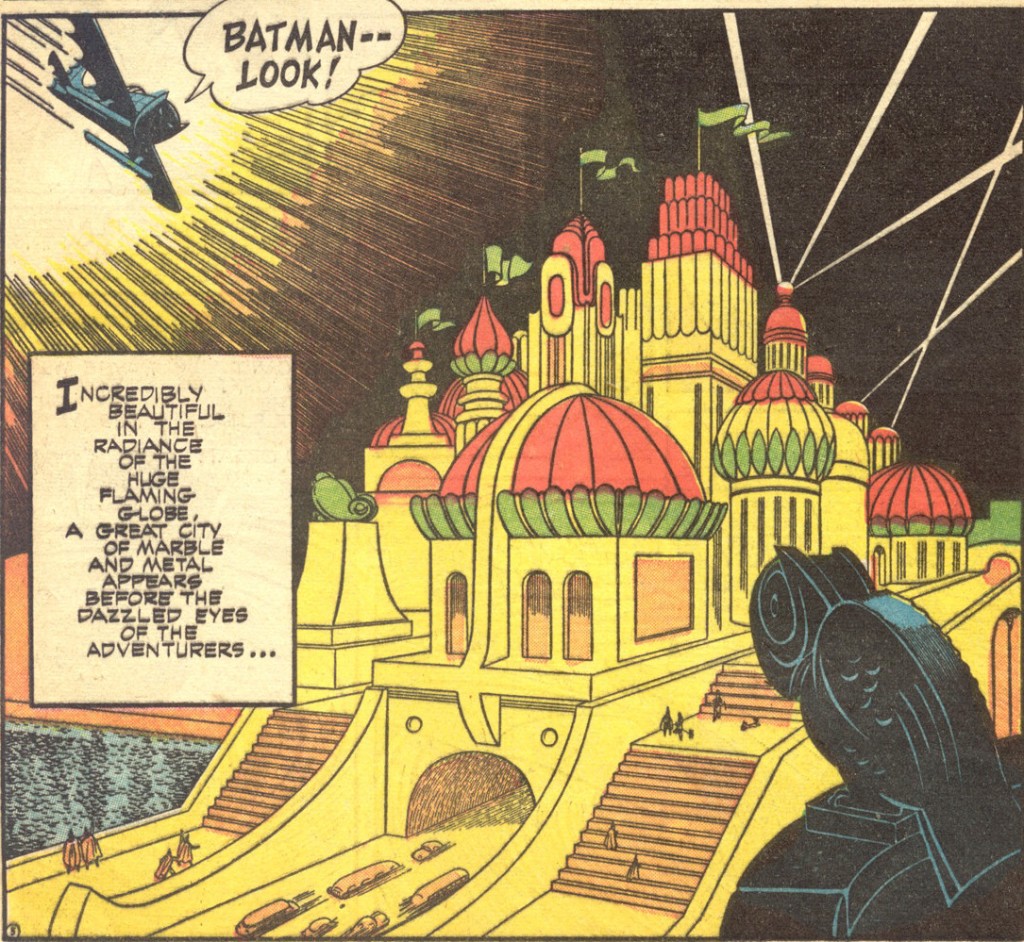 Batman #19
Batman #19
It turns out the Kingdom of Atlantis has been isolated from the surface world for over ten thousand years, with the exception of an encounter with a 16th century philosopher who (conveniently) taught the locals English. Also, more recently, they’ve become friends with the Third Reich…
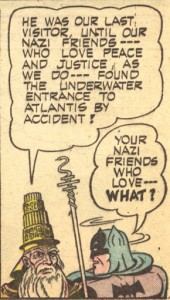 Batman #19
Batman #19
Even though Aquaman had been created a couple of years before, there wasn’t yet anything resembling a coherent DC Universe. So this version of Atlantis is actually ruled by Emperor Taro, a kid who looks like Robin, and by his sister Lanya, who awkwardly gets the hots for the Boy Wonder. Because Taro trusts his Nazi friends, he sentences the Caped Crusader to be burned to death in a particularly horrific way. Fortunately, though, Robin manages to escape, knock out the emperor, take his place, order Batman’s release, win Lanya’s heart, and ultimately start a massive brawl which he gleefully joins:
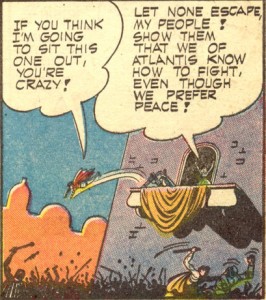 Batman #19
Batman #19
The story finishes with the Kingdom of Atlantis secretly fighting on the side of the Allies and with Empress Lanya asking Robin to always remember her. The adorable last panel features a love-struck Dick Grayson sighing for the-one-that-got-away while Bruce Wayne casually reads the newspaper.
Even when they weren’t engaged in such rip-roaring derring-do, Batman and Robin were all over the campaign for war bonds (because the Caped Crusader may hate guns, but he hates Nazis even more, goshdarn it). You can see the Dynamic Duo take time off from their busy crime-fighting schedule to help sell bonds to their fellow Americans in Batman #12 and Batman #14. They also support the campaign in the front covers of their comics, although choosing the weirdest places and occasions to do so:
One story which is entirely devoted to the war bond campaign is ‘The Bond Wagon’ (Detective Comics #78), scripted by Joe Greene, with pencils by Jack Burnley (as Bob Kane), and inks and letters by George Roussos. In this comic, dated August 1943, the Dynamic Duo hire men and women to dress as famous Americans from the Revolutionary War and travel the land in order to encourage people to buy war bonds. As if that weren’t heavy-handed enough, a group of Nazis try to sabotage this initiative, so you get to see George Washington beating up fascists, making this officially the Tea Party’s favorite comic!
To be sure, Batman’s involvement in World War II didn’t end when the war did. Twenty-four years later, Bob Haney and Neal Adams reimagined Bruce Wayne’s participation in the conflict, giving him a more active role in the preparation for D-Day, in ‘The Angel, the Rock and the Cowl.’
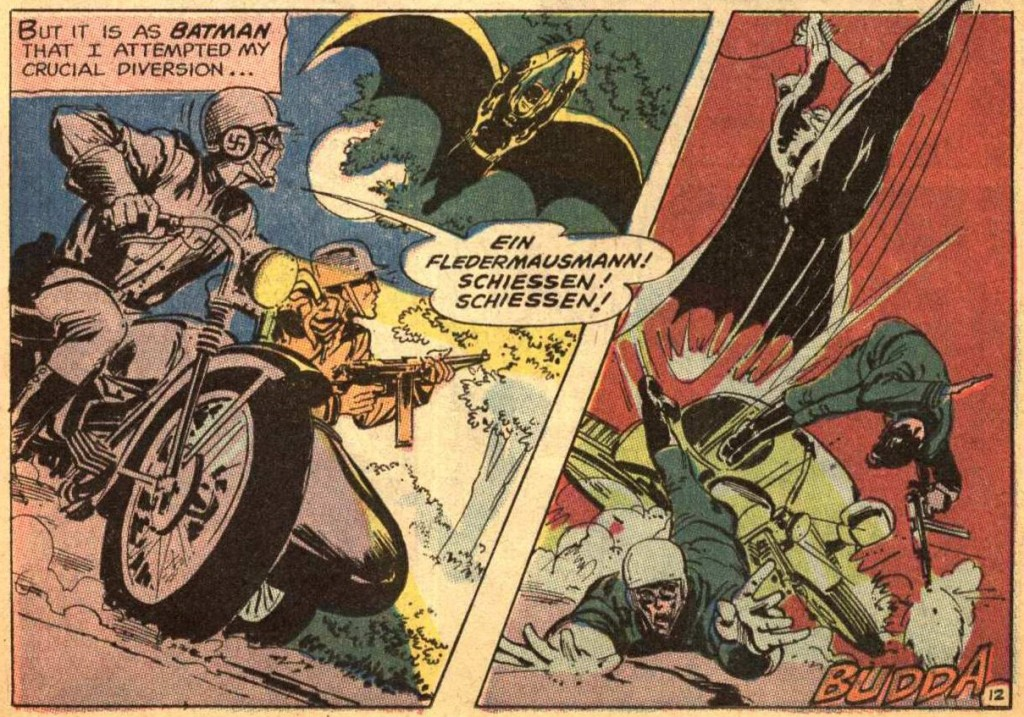 The Brave and the Bold #84
The Brave and the Bold #84
Archie Goodwin and Gary Gianni also retroactively pitted Batman against proper Nazis, albeit shortly before the war, in the charming short story ‘Heroes.’
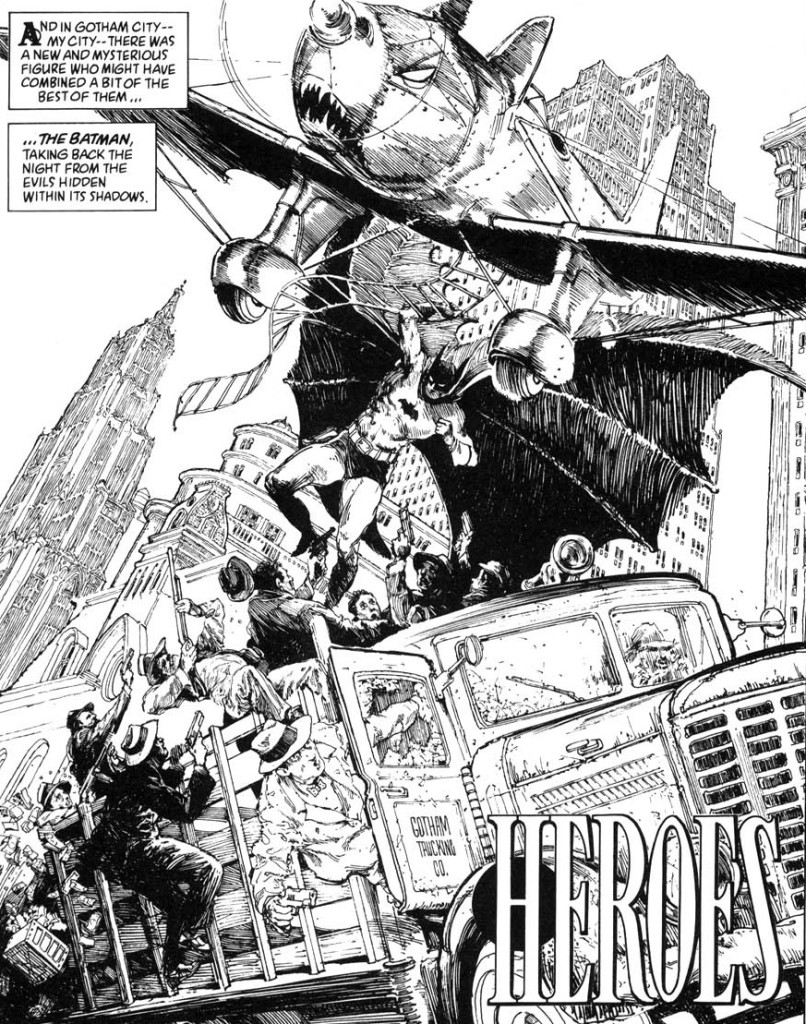 Batman: Black & White #4
Batman: Black & White #4
And, coolest of all, way before Michael Caine toughened up the posture of Bruce Wayne’s butler, Alfred had already been established as a badass operative in WWII:
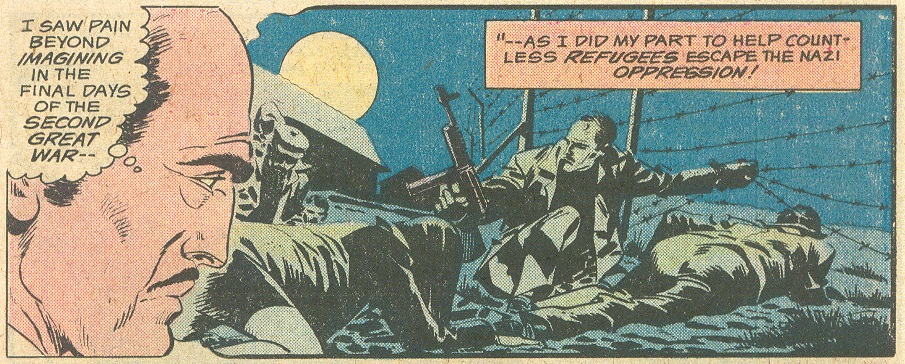 The Untold Legend of the Batman #2
The Untold Legend of the Batman #2
NEXT: Green Arrow.

